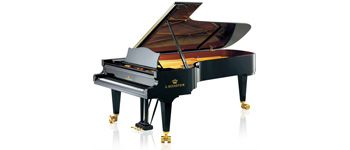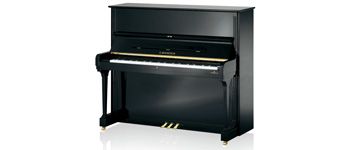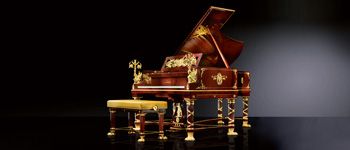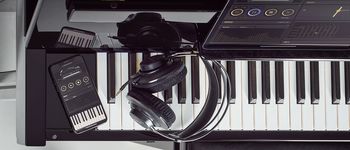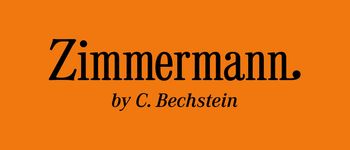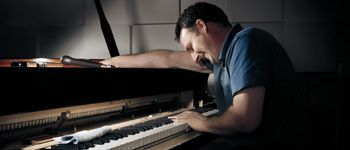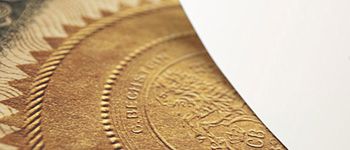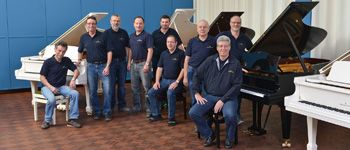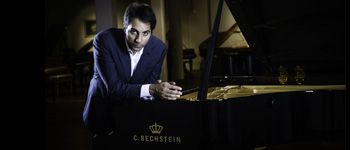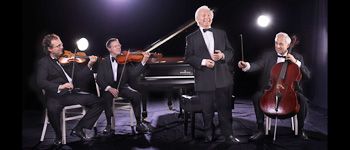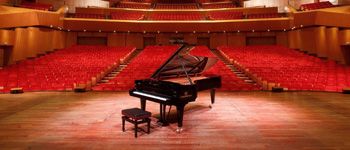Frequently asked questions
Where do I find the serial number of my Bechstein grand piano? Can you appraise its value from photographs? Is it possible to take a guided tour of the production site? Click the links below for answers to the most frequently asked questions.
In most cases the serial number consists of black digits located on the cast-iron frame, near the tuning pins. On very old C. Bechstein grands, it’s printed in large digits on the soundboard, next to the logo.
On some uprights, it might be printed on the inner face of the case, next to the action.
If you’re unable to locate the serial number or if the authenticity or completeness of the number you find are questionable, it won’t be possible to determine the age of your piano.
Unfortunately, any other numbers on the back of the soundboard or other parts of the instrument won’t shed any light on the year of manufacture, as they are merely internal production numbers and are not systematically recorded.
Unfortunately not.
To get genuine Bechstein parts, just email or fax us (service@bechstein.com or +49 35 86 40 41 06).
We’ll assess your needs precisely and make a suggestion for the best possible solution.
Unfortunately not. Determining the condition of your piano requires inspection of the instrument performed in person by a qualified specialist on site. Kindly contact a C. Bechstein Centrum or a qualified dealer in your region for further information and to arrange an appraisal.
Yes, we offer these services at our special workshops. Alternatively, we can recommend a suitable workshop near you.
For further information, just email or fax us (service@bechstein.com or +49 35 86 40 41 06).
We sell only C. Bechstein instruments, either new or restored at our special workshops.
Depending on age, type and condition of the instrument, the recommended voice pitch is about 440 – 443 Hz. If you are not sure or have further questions, please contact: service@bechstein.com.
Agraffes and capo bars serve the same purpose: to clearly delimit the vibrating length of the strings. Together with the strings’ mass and tension, the vibrating length determines the pitch. Agraffes are hollow brass parts on the cast-iron frame; the strings go through them just before the tuning pins. Capo bars fulfill the same function in the same place. On the earliest C. Bechstein grand pianos the treble strings rest on capo bars, but on later models they go through agraffes. Today’s C. Bechstein grands have capo bars for the treble strings, however. As for the C. Bechstein upright pianos, they are all made with agraffes.
Yes, absolutely. However, pianists favored agraffes in the past, and this has changed again today.
The Neo-Bechstein grand was the first instrument worldwide with electronically generated sound. This epoch-making piano was developed in the late 1920s in collaboration with Siemens and Nobel Laureate Walther Nernst. It was the forerunner of a trend that broke into the market only decades later.
Our production site has been located in Seifhennersdorf, Saxony, since 1992. It was in Berlin (West) when the company was founded in 1853 but, like many other production businesses, we had to relocate due to the restructuring of the city in the aftermath of German reunification. We invested millions of euros in modernizing the facility, which is now Europe’s main production site for high-end instruments. And development is on-going.
C. Bechstein Europe is a subsidiary of C. Bechstein Germany located in Hradec Králové, Czech Republic. This company with its 160 employees manufactures the W.Hoffmann instruments. It’s Europe’s second major manufacturer of upright and grand pianos, after C. Bechstein Germany. Our subsidiary benefits from our expertise.
C. Bechstein Germany and C. Bechstein Europe have the greatest in-house production depth of any European manufacturer. The German facility even manufactures the hammerheads, and we are endeavoring to extend our independence from suppliers even further.
For special technologies such as iron casting, we have selected our suppliers since 1853 according to strict criteria and the highest specification requirements. However, premium manufacturers like C. Bechstein don’t define themselves by their suppliers — it’s rather the other way around. Thus we hope you will understand that we prefer not to mention our suppliers by name.
Yes, you can order any new piano made by C. Bechstein Germany or C. Bechstein Europe with a Vario digital mute. For information on upgrading your instrument, please email us at service@bechstein.com.
